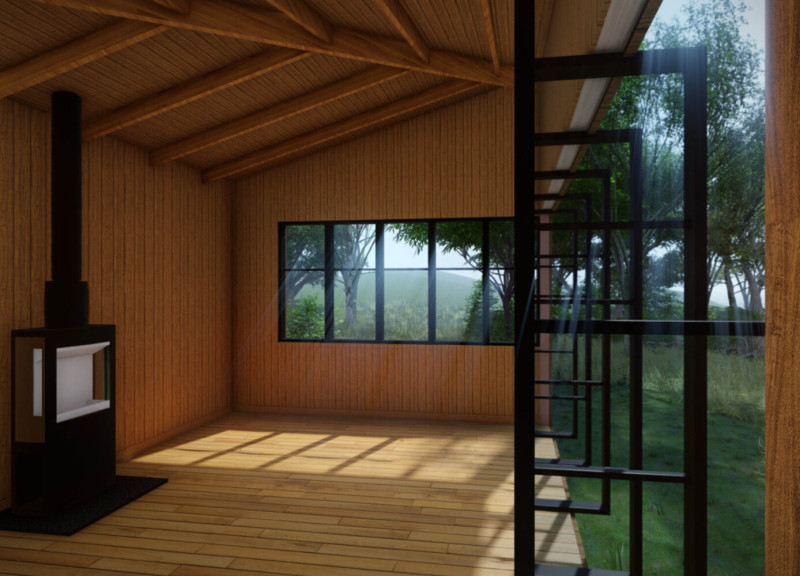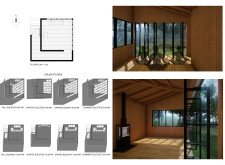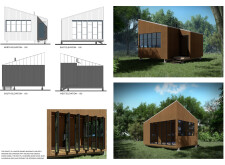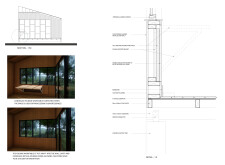5 key facts about this project
The primary function of the cabin revolves around providing a tranquil environment for meditation practices and the processing of flower essences. The spatial organization is open and flexible, allowing users to adapt the interior layout based on their activities. Features such as a concealed folding worktable support multifunctional use, enhancing the overall utility of the cabin while maintaining its minimalist aesthetic.
The relationship between the cabin and its site is a significant aspect of the design. The careful selection of materials, including wood for cladding and glass for expansive views, underscores the commitment to durability and the blending of built and natural environments. The incorporation of passive solar strategies is evident through the orientation of the structure, maximizing daylight access while minimizing reliance on artificial lighting.
Material Selection and Sustainability
A notable element that sets the Meditation Cabin apart from other architectural endeavors is its meticulous approach to materiality. The use of tongue and groove wood siding provides warmth and tactile comfort, while aluminum frames used in operable windows facilitate ventilation and maintain a clean aesthetic. The standing seam metal roof not only enhances the building's modern appearance but also ensures longevity and reduces maintenance requirements. Concrete support piers elevate the structure above the ground to mitigate ecological disruption, aligning with sustainable design practices.
Geometric Precision and Spatial Dynamics
The geometric design of the cabin plays a crucial role in its functionality and experience. The layout reflects an appreciation for the symbolic representation of stability, linking human experience to natural forces. The figure of eight created by the intersection of squares promotes fluid movement throughout the space. Large glass panels strategically positioned allow for views of the wooded surroundings, inviting nature into the cabin and enhancing the occupant's connection to it. Bi-folding doors extend the living space into the landscape, reinforcing the relationship between the interior and exterior.
The architectural simplicity emphasizes both form and function, steering clear of excessive ornamentation. This clarity of purpose aids in focusing the user's experience on mindfulness and reflection.
For a comprehensive understanding of the architectural plans, sections, and various design elements of the Meditation Cabin, readers are encouraged to explore the project presentation. An in-depth examination of the architectural ideas and details will provide further insights into the innovative approaches employed in this unique design project.


























